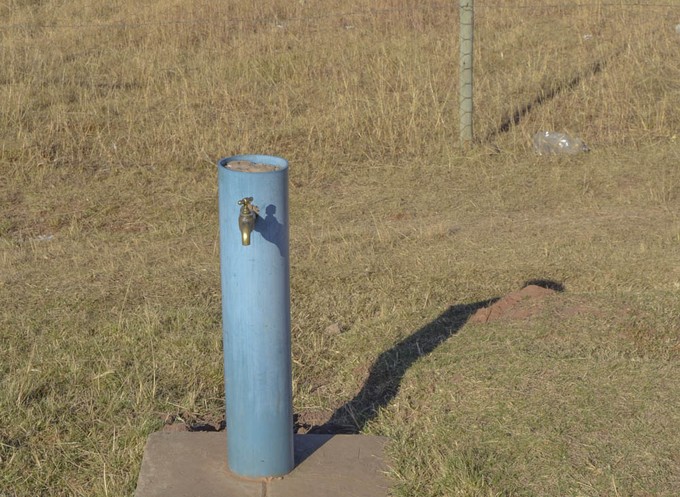
Butterworth taps have run dry in the drought. Photo: Nombulelo Damba-Hendrik
16 August 2016
Taps in Butterworth have run dry due to the drought in the Amathole District Municipality.
The municipality has urged residents of Butterworth and surrounding villages to use water wisely. Amathole District spokesperson Sisa Msiwa said only 50 days of water supply were left in Xilinxa dam, which supplies Butterworth.
Mnquma Local Municipality is one of three municipal areas which were declared drought disaster areas in December 2015. Subsequently, a provincial drought disaster was declared by Eastern Cape Premier Phumullo Masualle and gazetted on April 22.
“While rainfall in March and again in July did bring relief to some areas, the Xilinxa dam, supplying Butterworth, Kotana, Ehlobo, as well as many other rural villages between Butterworth and Centane, received very little inflow and the level has continued to drop to alarming levels,” said Msiwa.
She said the dam was currently only 13% full, including what is referred to “dead storage” in the dam, which is water below the outlet level which can only be used by installing pumps.
Wendy Poswa, who lives a few kilometres from Butterworth, said she had lost hope that the water crisis in Butterworth would ever be solved. There had been shortages of water for three months, she said.
Butterworth residents had been buying drinking water from shops in 5l containers, she said. But shops were beginning to run out.
“We are so close to using drinking water for washing,” Poswa said.
Earlier, residents had been supplied with water on alternate days. “But now things are worse, we only get water only for five minutes. They do not inform us when they are going to bring the water back. If you are not home during that time then you won’t get water,” she said.
Zoleka Njano, from Bika Village in Butterworth, said Mnquma Municipality had only informed residents before the elections about the shortage of water.
“That was before we had rain. Instead of having water after rain, things got worse, water was cut for a week. I’m in town as we speak and there’s no water,” she said.
Njano also said water was only supplied for a few minutes at a time.
“To drink we have to buy water in town, and not all of us can afford to buy water,” she said.
Msiwa said short and long term solutions were being explored, but it was unlikely that significant new groundwater sources would be found.
“The reality is that some people will continue to experience more prolonged outages than others.”
The district municipality would increase the flow of water every few days, she said.
“Water tankers have also been deployed to cart water to the most severely affected areas.”